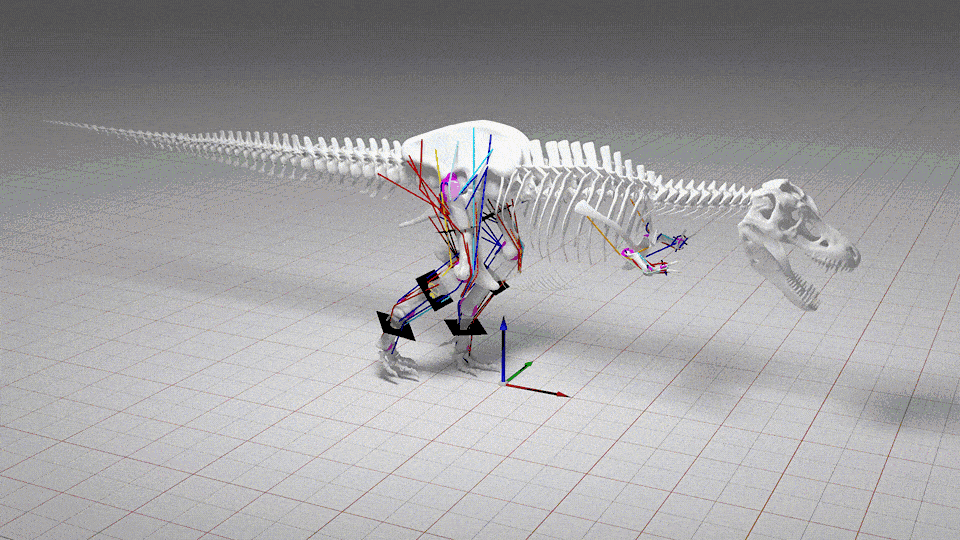When you purchase through linkup on our web site , we may earn an affiliate commission . Here ’s how it works .
Some dinosaur did n’t go to slumber when the sun went down . Like many living creature , some paleo - beast stayed alert or wake up to forage or start the hunt for prey .
This find , which bank on grounds within fossilized cadaver of dinosaur eyes , challenges the conventional wisdom that former mammals were nocturnal , or active at night , because dinosaur had already taken the day slip .

This plant-eating dinosaur, Protoceratops andrewsi, was active day and night, like many other herbivores, both living ones and dinosaurs.
" When we look at keep vertebrates today , be birds , lizards and mammals we see such a gravid diversity of when they ’re fighting during the day , " sound out study researcher Lars Schmitz , a postdoctoral researcher in ecology and evolution at the University of California , Davis .
Some animals today , like us , are alive during the sidereal day , while others favor nighttime . Still others are active periodically throughout a 24 - hr Hz . So Schmitz said he and colleague geologist Ryosuke Motani asked : " Why is n’t it possible thatdinosaurs are nocturnalas well ? "
All in the eyes

To find out , they looked into the preserved beasts ' eyes . Specifically , they search at the width of the eye socket , and the dimensions of the scleral ring , a ring of bone that surrounds the iris of the eye in bird , lounge lizard and dinosaur . ( humankind and other mammals do n’t have this bone . )
Nocturnal animals need to let the maximum amount of light possible into their eye , so they need a larger opening move within the scleral ring . Daytime living coinage , meanwhile , have much more light with which to see . A smaller initiative quash the amount of Department of Energy these animals have to spend constricting their pupils to repress the amount of illumination get along in , and it also allows them to see a clear and focused image at a large range of deepness , according to Schmitz . [ How the Human Eye Works ]
Other beast are alive at dusk and break of day or at sporadic intervals throughout the day — today this includes large herbivores , like the fallow deer , sure chick , the large hairy armadillo , the Amazon tree feather boa and even andiron . Their eyes need both visual acuity and a effective sensitivity to ignitor . As a result , they have an medium - size scleral ring — among those that have this bone — and an overall larger eye .

In the fossils , researchers examined the proportions of certain features of the eye to determine a species ' habit . They looked at the size of the curtain raising inside the scleral ring , where the pupil would be , as well as the middle socket to determine the diameter of the eye , and at the diam of the external edge of the scleral ring to determine the duration of the centre . They then compare this information with data from living species .
daytime , dark and in between
Among 33 species of dinosaur living during the Mesozoic era , about 250 million to 65 million years ago , they found a spread of lifestyles that resemble those among modern animals , an indication that dinosaurs too disseminate out to occupy the usable ecologic recession .

As with modern aeronaut , like birds and bats , the majority of the fly dinosaurs — including threepterosaursand all of the four avian dinosaurs ( the ascendant of modern birds ) studied — were alive during the day . However , five species of dinosaur fliers were either nocturnal or awake periodically , two of which may have had activity resembling certain nocturnal seabirds .
Most of the plant - feed dinosaur were awake sporadically . For herbivorous animals , like elephants and the herbivorous dinosaurProtoceratops andrewsi , larger size of it signify a need to drop more time forage and eating . Large animals are also more prone to overheat , so they endeavor to avoid being active during the heat of the sidereal day , shifting their activity into nighttime hour , accord to Schmitz . [ How Dinosaurs drive So vast ]
Predators , both dinosaur and modern , gain an advantage by hunt at nighttime , and all of the dinosaur predators analyse were either nocturnal or sporadically active . The finding could avail to set the degree for other dinosaur findings . For illustration , fossil grounds has documented an flak by one of these night denizen , Velociraptor mongoliensis , on the sporadically awakeProtoceratops . This attack probably go on in the twilight or miserable - twinkle conditions , the researchers write .

These results bespeak that dinosaurs and other mammal did not carve up the sidereal day and nighttime ; in fact , it ’s not yet clear whether other mammals were nocturnal at all , and that idea needs to be judge , Schmitz said .
The inquiry appear in the most recent issue of the diary Science .
you could followLiveSciencewriter Wynne Parry on Twitter@Wynne_Parry .














